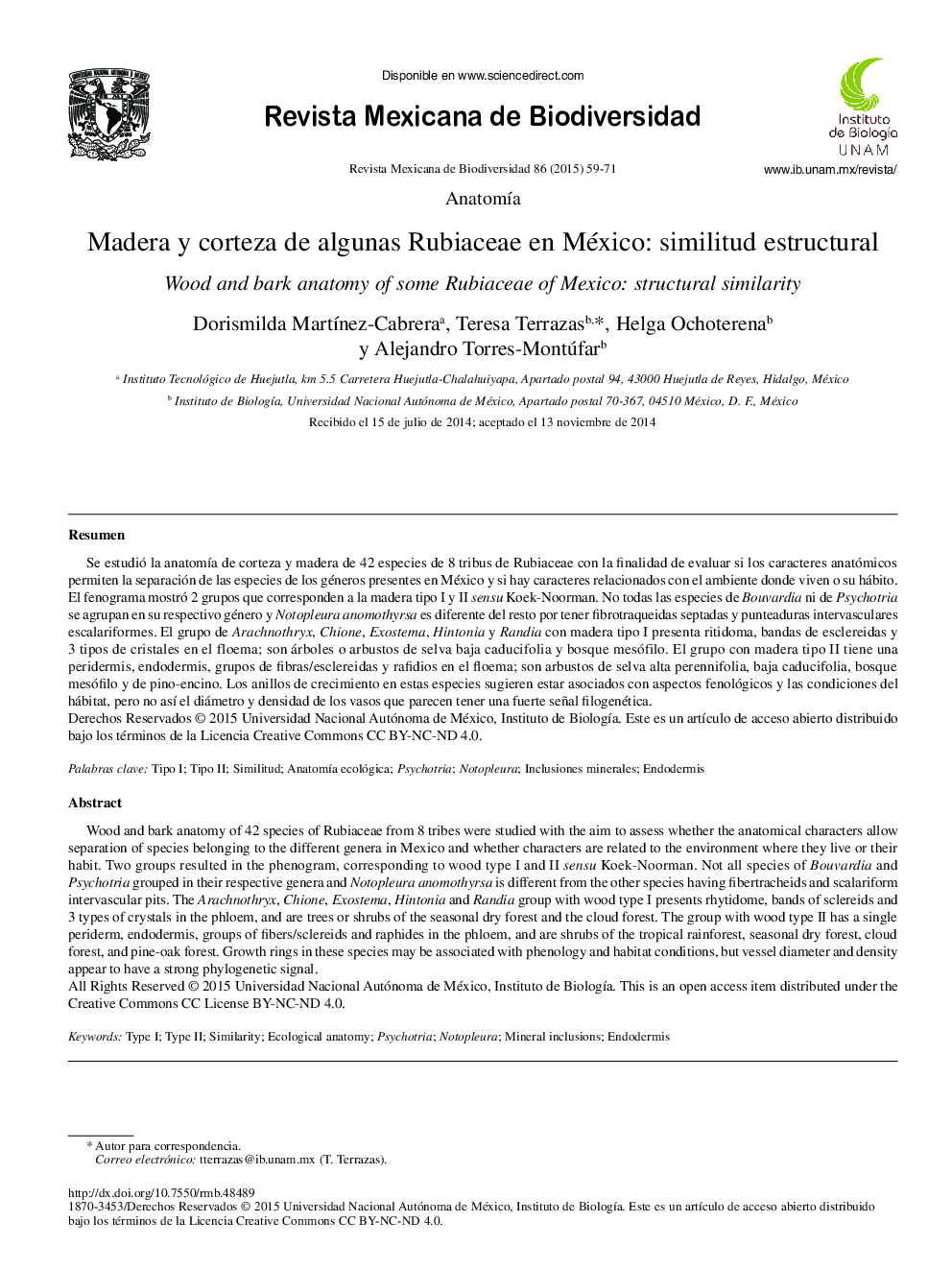| Article ID | Journal | Published Year | Pages | File Type |
|---|---|---|---|---|
| 4461515 | Revista Mexicana de Biodiversidad | 2015 | 13 Pages |
ResumenSe estudió la anatomía de corteza y madera de 42 especies de 8 tribus de Rubiaceae con la finalidad de evaluar si los caracteres anatómicos permiten la separación de las especies de los géneros presentes en México y si hay caracteres relacionados con el ambiente donde viven o su hábito. El fenograma mostró 2 grupos que corresponden a la madera tipo I y II sensu Koek-Noorman. No todas las especies de Bouvardia ni de Psychotria se agrupan en su respectivo género y Notopleura anomothyrsa es diferente del resto por tener fibrotraqueidas septadas y punteaduras intervasculares escalariformes. El grupo de Arachnothryx, Chione, Exostema, Hintonia y Randia con madera tipo I presenta ritidoma, bandas de esclereidas y 3 tipos de cristales en el floema; son árboles o arbustos de selva baja caducifolia y bosque mesófilo. El grupo con madera tipo II tiene una peridermis, endodermis, grupos de fibras/esclereidas y rafidios en el floema; son arbustos de selva alta perennifolia, baja caducifolia, bosque mesófilo y de pino-encino. Los anillos de crecimiento en estas especies sugieren estar asociados con aspectos fenológicos y las condiciones del hábitat, pero no así el diámetro y densidad de los vasos que parecen tener una fuerte señal filogenética.
Wood and bark anatomy of 42 species of Rubiaceae from 8 tribes were studied with the aim to assess whether the anatomical characters allow separation of species belonging to the different genera in Mexico and whether characters are related to the environment where they live or their habit. Two groups resulted in the phenogram, corresponding to wood type I and II sensu Koek-Noorman. Not all species of Bouvardia and Psychotria grouped in their respective genera and Notopleura anomothyrsa is different from the other species having fibertracheids and scalariform intervascular pits. The Arachnothryx, Chione, Exostema, Hintonia and Randia group with wood type I presents rhytidome, bands of sclereids and 3 types of crystals in the phloem, and are trees or shrubs of the seasonal dry forest and the cloud forest. The group with wood type II has a single periderm, endodermis, groups of fibers/sclereids and raphides in the phloem, and are shrubs of the tropical rainforest, seasonal dry forest, cloud forest, and pine-oak forest. Growth rings in these species may be associated with phenology and habitat conditions, but vessel diameter and density appear to have a strong phylogenetic signal.
